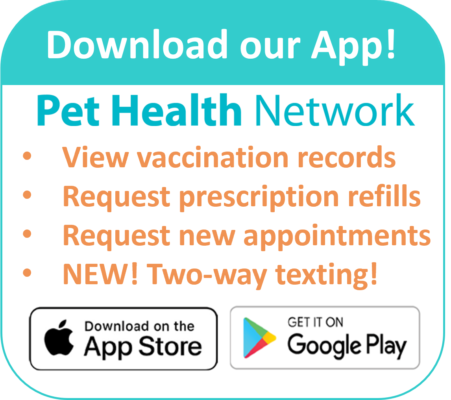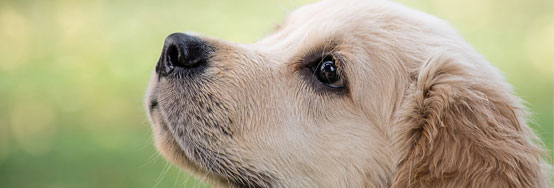Cat Dental Care
The cause of dental disease in animals is the same as in people. It starts with:
- Plaque is a matrix of bacteria and protein that is produced continuously. It is the slimy layer on your teeth that you feel.
- Plaque hardens to calculus (tartar) within 48 hours. Tartar traps plaque at the gumline, which leads to gingivitis (gum inflammation). Once tartar accumulates, it is difficult to remove without dental instruments.
- Gingivitis is an early sign of periodontal disease and will progress to gum recession, bone recession, and tooth loss without regular cleanings.
Dental disease can cause many signs of oral (mouth) disease and includes bad breath and pain. This can lead to difficulty eating hard foods or chew toys, loss of appetite, and possibly weight loss. However, many animals are stoic and do not show overt signs of a painful mouth. But after dental prophylaxis (cleaning), many owners report their animals are more energetic and eat better.
Dental disease also leads to systemic disease. Bacteria from the mouth enter the bloodstream via inflamed or infected gingiva and seed into the heart, kidneys, and liver leading to disease of these organs.
Treatment of dental disease includes a thorough dental prophylaxis (cleaning) under anesthesia. Anesthesia is used to keep animals still so we can clean the tartar out from under the gumline and off all the surfaces of the teeth. Do you think your animal would open its mouth and say “aaah”?!
During a cleaning, your pet will also be assessed for fractured teeth, tooth mobility, and periodontal pockets (an abnormal space around the tooth from periodontal disease). Extractions of these diseased teeth may be recommended during the dental cleaning or referrals to a dental specialist may be discussed.
Prevention of dental disease involves controlling plaque build-up. Examples include:
- Toothbrushing – this works best at removing plaque as you massage enzymatic toothpaste (which kills bacteria) directly onto the teeth and gums. Use special animal toothpaste, which does not foam or contain fluoride and has a palatable flavor for your pet. If you start brushing when your animal is young, it will likely be more cooperative as an adult. See “How to Brush Your Pet’s Teeth” handout for more details.
- Dental sprays – these contain antiseptics to kill bacteria. They can be useful for animals that do not cooperate for brushing as you apply them to the tooth surface indirectly. We carry a product called Nolvadent.
- Dental chews, food, and treats – these can be the easiest to get your pet to take, but aren’t as effective at removing plaque. Animals (and humans!) do not use every surface of every tooth to chew. So plaque and tartar can build up in areas. We carry C.E.T dog and cat chews, C.E.T. Aquadent (water additive), and Royal Canin Dental diet to use for food and/or treats.
Every day you should try some type of plaque control in order to reduce tartar build-up. Regular dental care is vital in keeping your pet’s entire body healthy.
Visit www.vohc.org for more information on dental disease.

Contact Us

